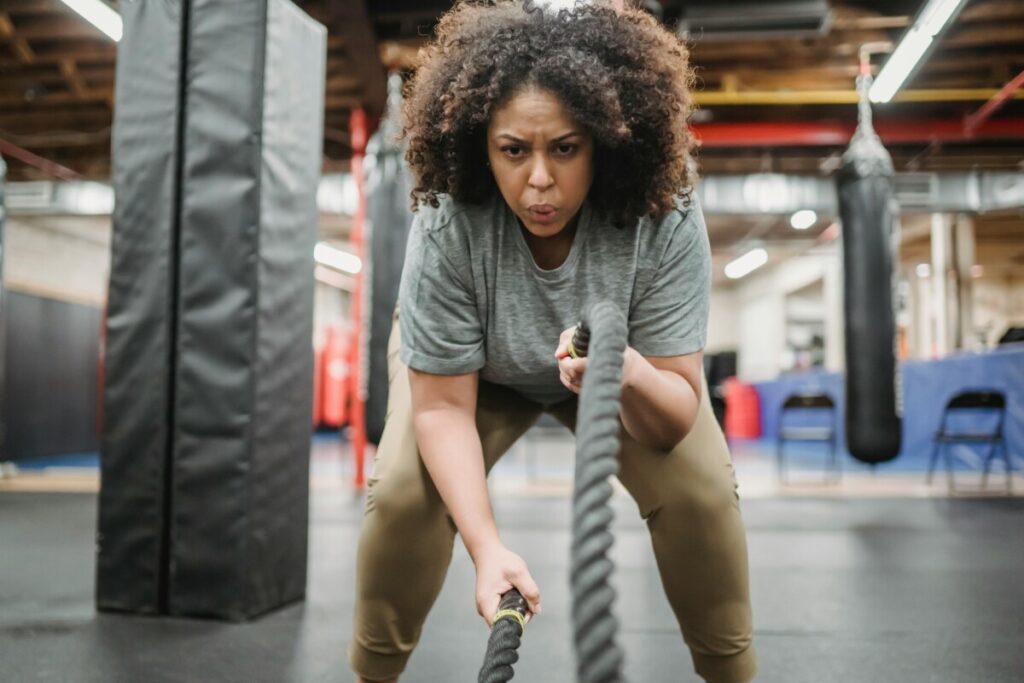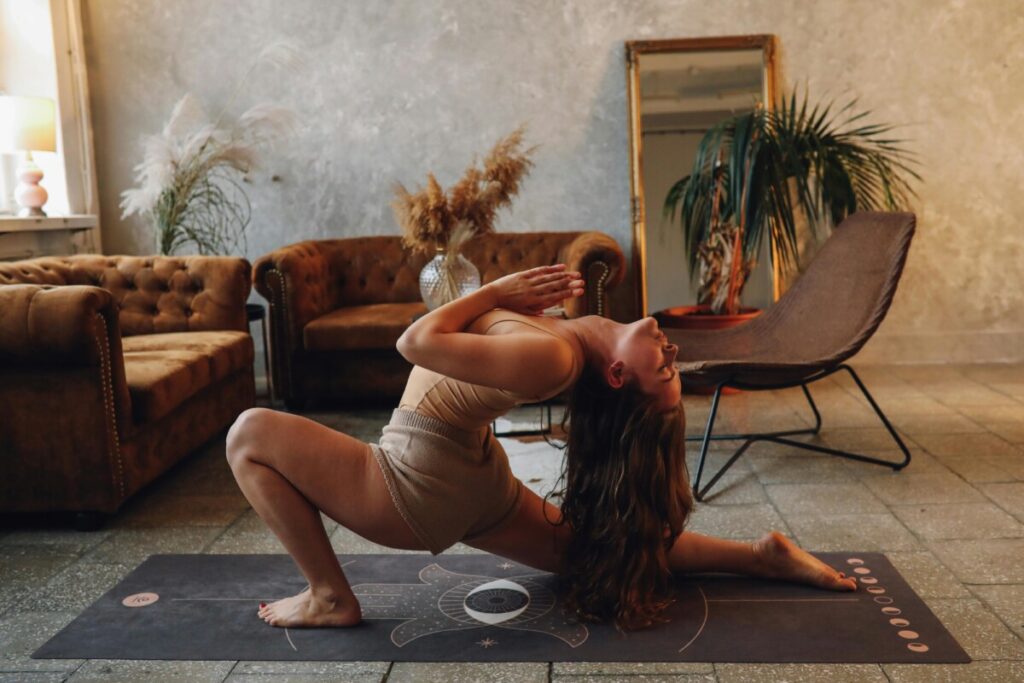Exercise at Home During the Cold Months


Staying active during the winter months can be a challenge for many people. The cold weather and shorter days often make it difficult to find the motivation to exercise. However, it is important to prioritize physical activity during this time, as it has numerous benefits for both physical and mental health.
Regular exercise is crucial for maintaining a healthy weight, reducing the risk of chronic diseases such as heart disease and diabetes, and improving overall cardiovascular health. It also plays a key role in managing stress, anxiety, and depression. With the added stress and isolation that can come with the winter season, staying active becomes even more important for maintaining mental well-being.
The Benefits of Exercising at Home
Exercising at home offers a convenient and cost-effective solution to staying active during the winter months. With a variety of online workout programs and fitness apps available, it has never been easier to access high-quality workouts from the comfort of your own home. This eliminates the need to travel to a gym or fitness studio, saving both time and money.
Another advantage of exercising at home is the flexibility it provides. You can choose the time of day that works best for you and fit your workout into your schedule without any constraints. Whether you prefer to exercise early in the morning or late at night, you have the freedom to do so without worrying about gym hours or class schedules.
Fun and Effective Cardio Workouts You Can Do at Home
Cardiovascular exercise is an essential component of any fitness routine, as it helps to improve heart health, burn calories, and promote weight loss. Fortunately, there are plenty of cardio workouts that can be done at home with little to no equipment.
One example is high-intensity interval training (HIIT), which involves alternating between short bursts of intense exercise and brief periods of rest. This type of workout can be done using bodyweight exercises such as burpees, jumping jacks, and mountain climbers. HIIT workouts are not only effective for burning calories, but they also help to improve cardiovascular endurance.
Another option for at-home cardio workouts is dance fitness. There are many online dance classes and tutorials available that can help you get your heart rate up while having fun. Dancing not only provides a great cardiovascular workout, but it also helps to relieve stress and improve coordination.
The Power of Yoga: A Great Way to Stay Active and Relaxed
Yoga is a fantastic way to stay active during the winter months while also promoting relaxation and stress relief. It combines physical movement with mindfulness and breath control, making it a holistic practice for both the body and mind.
The benefits of yoga extend beyond just physical fitness. It can help to improve flexibility, balance, and strength, while also reducing anxiety and improving sleep quality. Yoga poses, or asanas, can be easily done at home with just a yoga mat and some comfortable clothing.
Some examples of yoga poses that can be done at home include downward dog, warrior poses, and child’s pose. These poses target different muscle groups and provide a full-body workout. Additionally, incorporating deep breathing and meditation into your yoga practice can help to calm the mind and reduce stress.
Strength Training: Simple Exercises to Build Muscle at Home
Strength training is an important component of any fitness routine, as it helps to build lean muscle mass, increase metabolism, and promote weight loss. Contrary to popular belief, you don’t need a gym full of equipment to get a good strength training workout. There are plenty of exercises that can be done at home using just your body weight or minimal equipment.
One example of a bodyweight exercise is the push-up. This exercise targets the chest, shoulders, triceps, and core muscles. To perform a push-up, start in a high plank position with your hands shoulder-width apart. Lower your body down towards the floor, keeping your elbows close to your sides, and then push back up to the starting position.
Another effective strength training exercise that can be done at home is the squat. Squats target the muscles of the lower body, including the quadriceps, hamstrings, and glutes. To perform a squat, stand with your feet shoulder-width apart, toes slightly turned out. Bend your knees and lower your hips down towards the floor, keeping your chest lifted and your weight in your heels. Push through your heels to return to the starting position.
The Benefits of Dance: How to Get Your Groove on at Home
Dance is not only a fun and enjoyable activity, but it also provides a great cardiovascular workout. Dancing gets your heart rate up, burns calories, and improves cardiovascular endurance. It also helps to improve coordination, balance, and flexibility.
There are many dance workouts available online that can be done at home. These workouts often incorporate a variety of dance styles, such as hip-hop, salsa, and Zumba. They are designed to be accessible to all fitness levels and can be modified to suit your needs.
Dancing is not only a great way to stay active during the winter months, but it also provides a mental escape from the stresses of daily life. It allows you to let loose, have fun, and express yourself through movement. So put on your favorite playlist and get your groove on at home!
HIIT Workouts: High-Intensity Interval Training for Quick Results
High-intensity interval training (HIIT) is a popular form of exercise that involves short bursts of intense exercise followed by brief periods of rest. This type of workout is known for its efficiency and effectiveness in burning calories and improving cardiovascular fitness.
One of the advantages of HIIT workouts is that they can be done in a short amount of time. A typical HIIT workout can range from 10 to 30 minutes, making it a great option for those with busy schedules. The intense nature of the exercises also means that you continue to burn calories even after the workout is over, thanks to the afterburn effect.
Many HIIT workouts can be done at home with little to no equipment. For example, you can perform exercises such as squat jumps, burpees, and mountain climbers in quick succession, with short rest periods in between. These exercises target multiple muscle groups and provide a full-body workout.
The Importance of Stretching: Simple Stretches to Do at Home
Stretching is often overlooked but is an important component of any fitness routine. It helps to improve flexibility, prevent injury, and reduce muscle soreness. Incorporating stretching into your at-home workouts can help to improve your overall fitness and well-being.
Many stretches can be done at home to target different muscle groups. One example is the standing hamstring stretch. To perform this stretch, stand with your feet hip-width apart and extend one leg straight in front of you. Hinge forward at the hips, keeping your back straight, until you feel a stretch in the back of your leg. Hold for 30 seconds and then switch sides.
Another effective stretch is the chest stretch. Stand with your feet hip-width apart and interlace your fingers behind your back. Squeeze your shoulder blades together and lift your arms away from your body, feeling a stretch in your chest and shoulders. Hold for 30 seconds and then release.
Tips for Staying Motivated and Consistent with Your At-Home Workouts
Staying motivated and consistent with your at-home workouts can be a challenge, especially during the winter months. However, there are several strategies you can use to help you stay on track.
One tip is to set specific goals for yourself. Whether it’s improving your cardiovascular endurance, increasing your strength, or losing weight, having a clear goal in mind can help to keep you motivated and focused. Break your goal down into smaller, achievable milestones and track your progress along the way.
Another tip is to find a workout buddy or join an online fitness community. Exercising with others can provide accountability and support, making it more likely that you will stick to your workouts. You can also share your progress, challenges, and successes with others, which can help to keep you motivated and inspired.
Lastly, mix up your workouts and try new activities. Doing the same routine day after day can quickly become boring and monotonous. By trying new exercises and workouts, you can keep things fresh and exciting. This can help to prevent boredom and keep you engaged in your fitness routine.
Conclusion: Stay Active and Healthy All Winter Long
Staying active during the winter months is crucial for maintaining physical and mental health. Exercising at home offers a convenient and cost-effective solution, with a wide variety of workouts available online. Whether you choose to do cardio workouts, yoga, strength training, dance, or HIIT, there are plenty of options to keep you active and engaged.
Remember to prioritize your health and make time for regular physical activity. Set goals, track your progress, and stay motivated by trying new workouts and finding support from others. By staying active and healthy all winter long, you can improve your overall well-being and set yourself up for success in the months to come. So put on your workout clothes, turn up the music, and get moving!
If you’re looking for a fun and energetic way to stay active indoors during the cold winter months, why not try Zumba? This popular dance fitness program not only helps you burn calories and improve cardiovascular health, but it also boosts your mood and reduces stress. Check out this article on the benefits of Zumba to learn more about how this high-energy workout can keep you moving and motivated, even when it’s too cold to exercise outside. (source)
FAQ’s
Q: What are the benefits of exercising at home during the cold months?
A: Exercising at home during the cold months allows you to stay active and maintain a healthy lifestyle without braving the chilly weather. It also provides convenience and flexibility in terms of scheduling your workouts.
Q: Can I effectively exercise at home without any equipment?
A: Absolutely! There are plenty of exercises that you can do at home without any equipment. Bodyweight exercises like push-ups, squats, lunges, and planks can help you build strength and improve your fitness level.
Q: How long should my home workouts be?
A: The duration of your home workouts depends on your fitness level and goals. It is generally recommended to aim for at least 150 minutes of moderate-intensity aerobic activity per week or 75 minutes of vigorous-intensity aerobic activity. You can divide this time into shorter sessions throughout the week.
Q: How can I stay motivated to exercise at home during the cold months?
A: Staying motivated can be challenging, but there are a few strategies that can help. Setting specific goals, creating a workout schedule, finding a workout buddy, and varying your exercises can all help keep you motivated and engaged in your home workouts.
Q: Are there any specific safety precautions I should take when exercising at home?
A: Safety should always be a priority when exercising, even at home. Make sure you have a clear and safe space to perform your exercises, wear appropriate workout attire and shoes, warm up before each session, and listen to your body to avoid overexertion or injury. If you have any underlying health conditions, it’s always a good idea to consult with a healthcare professional before starting a new exercise routine.
Note: The tone of voice used in the FAQs is professional and informative, aimed at providing clear and helpful answers to the target audience’s questions.







